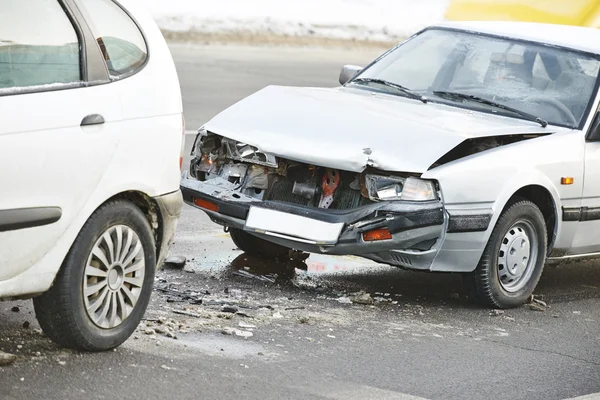Post-Accident Checklist: Your Essential Guide To Collision Repair
Being involved in a car accident can be both daunting and anxiety-inducing. However, having a clear plan of action for the moments that follow can significantly ease the process. This detailed guide will walk you through the crucial actions to take after an accident, emphasizing how to handle collision repairs effectively. You’ll find information on evaluating the damage, dealing with insurance, and selecting the best repair facility—everything necessary for a more seamless recovery after an incident. Learn about Collision Repair.
Initial Steps After an Accident
Ensure Safety First
After an accident, the foremost concern should be safety. If you can, relocate your car to a safe area away from moving traffic, activate your hazard lights, and check that all passengers are okay. Do not flee the scene, as this could result in legal complications; instead, contact emergency services if necessary.
Contact the Authorities
No matter how serious the accident may be, it is usually advisable to reach out to law enforcement, particularly for matters related to insurance and legal concerns. An official police report provides an impartial account of what occurred and can prove essential when filing an insurance claim.
Gather Information
Gathering accurate information at the accident site can simplify the repair process for your vehicle. Be sure to share these specific details with the other individuals involved:
- Contact details such as names, phone numbers, and addresses.
- Names of insurance providers along with policy numbers.
- Vehicle descriptions and license plate information.
- If possible, the contact information of any witnesses.
Furthermore, capture images of the accident site, the harm done to each vehicle, and any pertinent roadway conditions.
Filing an Insurance Claim
Contact Your Insurance Provider
Contact your insurance provider at your earliest convenience following the accident. Most insurance companies offer round-the-clock claims assistance and can guide you through the claim submission process, as well as refer you to trusted collision repair facilities. Make sure to give them precise information about the incident and submit any required paperwork.

Understand Your Insurance Policy Coverage
Before starting any repairs, it's crucial to familiarize yourself with your coverage. Insurance policies can differ greatly, and being aware of the specifics of what is included can help you steer clear of unforeseen costs. Your policy might include coverage for:
- Liability insurance (to cover harm caused to others)
- Collision insurance (for damage to your vehicle)
- Comprehensive insurance (for damages not resulting from accidents)
Examining your policy can help you understand whether you'll have to cover a deductible, which is the amount of the repair expense that you are liable for.
Assessing Vehicle Damage
Conduct a Visual Inspection
Conducting a visual examination can provide an initial understanding of the damage's severity. Look for obvious problems such as dents, shattered lights, or leaking fluids. Although this type of inspection isn't exhaustive, it serves as a useful foundation and can assist in assessing how urgently repairs are needed.
Understand Hidden Damage
Damage isn't always apparent right away. The collision may have impacted internal elements like the suspension, steering alignment, or engine components. Skilled technicians can utilize diagnostic equipment during repairs to identify any concealed issues that require fixing.
Choosing a Collision Repair Shop
Look for Certified Repair Shops
Selecting a trustworthy repair facility can greatly impact the level of service you receive. Seek out shops that have been certified by manufacturers or recognized organizations such as the National Institute for Automotive Service Excellence (ASE). These credentials typically suggest that the technicians possess thorough training and adhere to established quality benchmarks.
Consider Insurance-Preferred Shops
Your insurance company might provide a selection of recommended repair facilities that guarantee their services. Although you aren't obligated to choose from this list, these shops can be a practical and trustworthy option. Typically, these preferred facilities collaborate closely with insurers, which can speed up the repair process and make handling paperwork easier.

Read Reviews and Get Recommendations
Personal recommendations and digital reviews are important tools. They offer information about the shop’s service quality, repair standards, and pricing. Seek advice from friends, family, or colleagues, and look at online feedback to gauge customer experiences.
Collision Repair Process
Initial Estimate and Inspection
The process of repairing collision damage starts with an in-depth evaluation and cost assessment. Technicians will examine both apparent and concealed damages to generate a comprehensive repair estimate. If you can, obtain several estimates to compare prices and quality of service.
Parts Ordering and Disassembly
After you give the go-ahead on the estimate, the repair shop will procure any required parts and start taking apart the vehicle. This step is crucial for uncovering any hidden damage. Using top-notch replacement components, whether they are OEM or aftermarket, is vital for maintaining your vehicle's safety and durability.
Structural and Mechanical Repairs
Repairing a vehicle after a collision frequently requires reinstating its structural strength. This process can entail straightening the frame, fixing the suspension, and addressing any essential mechanical issues. Experienced technicians utilize specialized tools to guarantee that the frame is properly aligned and that all mechanical parts operate as they should.
Painting and Reassembly
After finishing the structural and mechanical repairs, the vehicle undergoes a repainting process to bring back its original appearance. The new paint is meticulously matched for uniformity. The last stage includes putting the vehicle back together and conducting thorough quality inspections to confirm that all repairs comply with safety regulations.
Post-Repair Considerations
Quality Check and Final Inspection
Before taking your vehicle home, make sure the repair shop conducts a comprehensive quality inspection. Discuss the repairs with the technician to verify that every problem has been resolved. If you can, take the car for a test drive to ensure it runs smoothly.
Retain All Documentation
Retain all documentation related to repairs, such as the original estimate, the final bill, and any warranties for parts. These records can be beneficial for upcoming maintenance and serve as evidence of repairs should you choose to sell the car.
Protecting Your Car After Collision Repairs
Regular Maintenance
Caring for your car after it has undergone collision repairs is essential to avoid additional problems. Adhere to the suggested maintenance timelines and be alert for any strange sounds, leaks, or alterations in how the vehicle operates.
Consider Protective Add-Ons
Consider incorporating extras such as paint protection film or rust-resistant treatments to enhance protection. These upgrades can safeguard your car's aesthetics and help the repairs endure over time.

